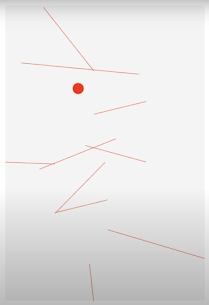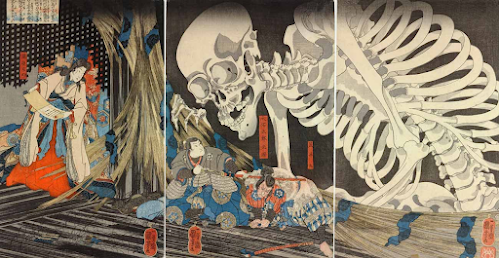Advance Typography - Task 1 / Exercise: Typographic Systems & Type & Play
(Week 1 - Week 3) [Deadline: Week 4]
Khan Saif / 0367438
Advanced Typography / Bachelor of Design (Honours) in Creative Media / Taylor's University
Task 1 / Exercises: Typographic Systems & Type & Play
Table of Contents
1. Lectures
2. Instructions
3. Process Work
i. Research
ii. Ideation
iii. Final Submission
4. Feedback
5. Reflection
6. Reference
Lectures:
WEEK 1 | Introduction & Briefing
8 Major variation for Typographic Systems:
- Axial System:
All elements are organized to the left or right of a single axis.
- Radial System:
All elements are extended from a point of focus.
- Dilatational System:
All elements expand from a central point in a circular fashion.
- Random System:
- Grid System:
A system of vertical and horizontal divisions.
- Transitional System:
An informal system of layered banding.
- Modular System:
A series of non-objective elements that are constructed in as a standardized unit.
- Bilateral System:
All text is arranged symmetrically on a single axis.
WEEK 2 | Typographic Composition:
1. Principles of Typographic Composition:
Emphasis, Isolation, Repetition, Symmetry and Asymmetry, Alignment and Perspective
2. Rules of Third:
A photographic guide that suggests a frame or space can be divided into 3 columns and 3 rows.
3. Environmental Grid:
A grid based on existing structure or numerous structures combined.
4. Form and Movement:
An existing grid system.
WEEK 3 | Context & Creativity
1. Handwriting:
It was first mechanically produced letterform that later become the basic or standard for form, spacing and conventions type would try and mimic.
2. Cuneiform:
The earliest form of writing, was written from left to right.
3. Hieroglyphics:
It was fused with the art of relive carving and is a mixture of rebus and phonetic character, the first evolution into future alphabetic systems.
4. Early Greek:
Built on the Egyptian logo-consonantal system and it was drawn freehand without any serifs.
5. Roman Uncials:
Evolving into Roman Letters, they were becoming more rounded, the form was curved for less strokes.
In England, uncials evolved into a more slanted and condensed form.
7. Carolingian Minuscule:
A noteworthy development as the Roman Capital, it became the pattern for the Humanistic Writing of the 15th century.
8. Black Letter:
Adapting the gothic style, a culminating artistic expression during 1200-1500. Has tight spacing and condensed lettering.
9. Movable Type:
Introduced and pioneered in China during 1000-1100 CE, but achieved in Korea as Diamond Sutra.
10. Indus Valley Civilisation (IVC) Script:
Oldest writing found in India subcontinent.
11. Brahmi Script:
Earliest writing developed in India after the Indus script, and all modern Indian script and several hundred scripts found in South East Asia are derived from Brahmi.
WEEK 4 | Designing Type
Type Design Process:
1. Research:
Understand Type history, anatomy and conventions.
3. Process Work
Instructions:
Week 2:
Things to note for each project:
1.
Week 3:
Multiple attempts for creating the posters (Excluding axial/radial/Dilatational)
Random
Grid
Transtitional
Modular
Bilateral
Submission:
Task 1 Exercise 1:
Axial System JPG 300pi (1024px)
Radial System JPG 300pi (1024px)
Dilatational System JPG 300pi (1024px)
Random System JPG 300pi (1024px)
Grid System JPG 300pi (1024px)
Transitional System JPG 300pi (1024px)
Modular System JPG 300pi (1024px)
Bilateral System JPG 300pi (1024px)
8 Typographic system (Without Guides)
8 Typographic system (With Guides)
Task 1 Exercise 2:
"CORAL" Poster Moodboard
Final "CORAL" Poster (JPEG)
Final "CORAL" Poster (PDF)
Feedback:
Week 3:
General:
1. Between the image and the typography should have focus and representation between each other.
2. Be sure to put the font reference as part of the process.
Week 4:
General:
Make sure my movie poster should:
1. Include movie production logo
2. Make sure the text I included for the poster not fighting the title of the logo.
3. Make sure the background photos for the movie poster is accurate and relatable to the typography I created.
Specific:
The strokes and weight for the letter "C" and "O" should be adjusted to match the consistency of strokes, weight and shape for other letters.
Reflection:
Experience:
After 6 weeks of continuous effort to make my creation a reality, I learnt the basics of 8 typographic systems and apply them in practises in not just this task alone, but also future tasks that I need to apply myself of. Out of all the systems, I find Random very difficult to execute because the concept of the idea, for me, is rather vague. I also learnt the basics of cropping into different shapes and objects to create an ideal font for my movie poster. It was a casual and fun experiment for me but also a very trial-and-error project that I might see a pattern for myself in the future. The assignment was fun, but it takes decades to perfect the font I and Mr. Vinod envisioned.
Findings:
What I'm seeing for both tasks is that it is essential to master the basics before moving on with any further tasks. Focus one thing in a consistent basis, and research more in a consistent basis as well. In the world of not just designs, but also society, organizations and managements are keys to success, and I learnt that the hard way in this first task.








.png)
.png)
.png)
.png)
.png)














Comments
Post a Comment